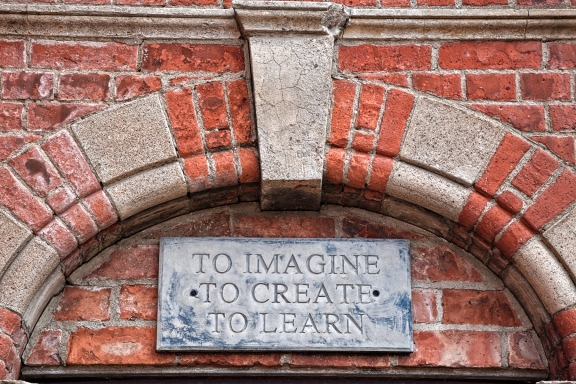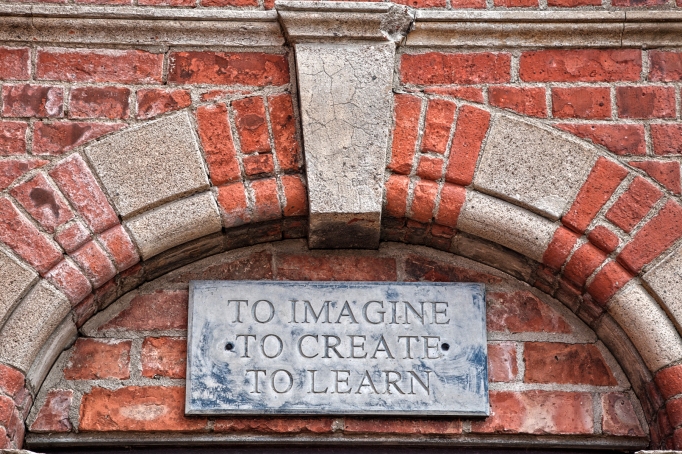 Current educational systems within society work to divorce the child from his or her natural will, whether that is curiosity or wonder or innocence. An educational system structured on nurturing and nourishing these aspects of humanity work to reunite humans with their connection to nature, animals and their mammal-ness. To become again a human being, rather than a “cog in the wheel” or “gear in the machine” felt by many in current society, and what was beget by the likes of John B. Watson, Frederick Taylor, Ayn Rand and Edward Bernays.
Current educational systems within society work to divorce the child from his or her natural will, whether that is curiosity or wonder or innocence. An educational system structured on nurturing and nourishing these aspects of humanity work to reunite humans with their connection to nature, animals and their mammal-ness. To become again a human being, rather than a “cog in the wheel” or “gear in the machine” felt by many in current society, and what was beget by the likes of John B. Watson, Frederick Taylor, Ayn Rand and Edward Bernays.
The educational system does not seem to be interested in providing paths inviting introspection or comprehension of theory of mind or even learning as a means to understanding. Education seems to have only a vested interest in preservation of funding, rote and memorization, grade fulfillment, bicameral thinking (linear grade promotion, success or failure, pass or fail, etc), homogeneous conditioning, etc. Frankly, this does not work and merely churns out workers, rather than evolving society/humanity as a whole. I mean, with current access of technology, shouldn’t this system be a lot farther along; instead, today’s educational system, for the most part, works against technology, rather than with it.
only a vested interest in preservation of funding, rote and memorization, grade fulfillment, bicameral thinking (linear grade promotion, success or failure, pass or fail, etc), homogeneous conditioning, etc. Frankly, this does not work and merely churns out workers, rather than evolving society/humanity as a whole. I mean, with current access of technology, shouldn’t this system be a lot farther along; instead, today’s educational system, for the most part, works against technology, rather than with it.
The educational system is but one part of the systematic deconstruction of human will, therefore, it becomes naturally normal humans will treat one another with impunity come what may and never change because such level of rudeness and offense is now hardwired into the human brain (socialization). Can this be changed? Even if an educational system built upon nourishing and nurturing, self-efficacy rather than self-esteem, ultimately, the change lies in the receiver of the tool (in the student), but that the instruments exist in the first place, that they are available to be utilized freely is an element of that change. In this way, the means to evolve can pass into legacy, can pass into the collective consciousness, if you will, available to any found wanting. Today’s child, even if he or she takes but a little from such teaching, may trigger a subtle reverberation within that causes him or her to behave differently in an otherwise routine circumstance. In this way, the “gene” can be inherited, and then improved in the next generation.
Playing Not To Lose
Today’s systemic educational system supports and reinforces human suffering (for the supposed greater good, and that greater good is really the continued protection of what has become an extremely insecure society). You see, it is a form of game theory. We are playing not for profit, or even to win, but not to lose. Not to lose is a third option, that is to say, not an opposite of winning. But a third option, along with winning and losing. To play not to lose, is to risk the possibility of winning and to avoid any chance at all of losing. Applied to society, we have become comfortable in not losing anything, which seems like a better alternative. This is an illusion. To play not to lose would beget suffering, as one becomes so intent on making sure the status quo remains intact that any opportunity to change one’s station in life (however that may be) is discarded due to fear that one may lose everything one has “worked so hard,” up until now, to possess (which of course would be measured in the value placed in things, or the value placed in being allowed privilege of access to things, i.e., money. That is money as social institution, rather than a utility). This can make us bitter, and leads to suffering, fighting, and acts of violence, etc. How to stop this kind of behavior? How to end human suffering? At least, breed it out? Realization, or a precursor, the means to embark upon a journey to realization. Social systems (the forefront, to be honest, for human conditioning—conditioning not in the indoctrination sense, but in the sense of humanity, the natural state of human being-ness) would have to reflect that kind of philosophy.
possibility of winning and to avoid any chance at all of losing. Applied to society, we have become comfortable in not losing anything, which seems like a better alternative. This is an illusion. To play not to lose would beget suffering, as one becomes so intent on making sure the status quo remains intact that any opportunity to change one’s station in life (however that may be) is discarded due to fear that one may lose everything one has “worked so hard,” up until now, to possess (which of course would be measured in the value placed in things, or the value placed in being allowed privilege of access to things, i.e., money. That is money as social institution, rather than a utility). This can make us bitter, and leads to suffering, fighting, and acts of violence, etc. How to stop this kind of behavior? How to end human suffering? At least, breed it out? Realization, or a precursor, the means to embark upon a journey to realization. Social systems (the forefront, to be honest, for human conditioning—conditioning not in the indoctrination sense, but in the sense of humanity, the natural state of human being-ness) would have to reflect that kind of philosophy.
*Images: “To Imagine, To Create, To Learn” by Nicholas Raymond, “True/False” from FybridPhotos, and “Concrete Caves: Hall 1” by Gwynstock.
Related articles
- On Honesty (nikotheorb.wordpress.com)
- Forbidden Education ( Video ) (returningtohouse.wordpress.com)
- Toffler on Super-Industrial Education (danedormio.wordpress.com)
- Education and Politics – II (yeochief.wordpress.com)
- How to Best Improve the Education System? (pukirahe.wordpress.com)
